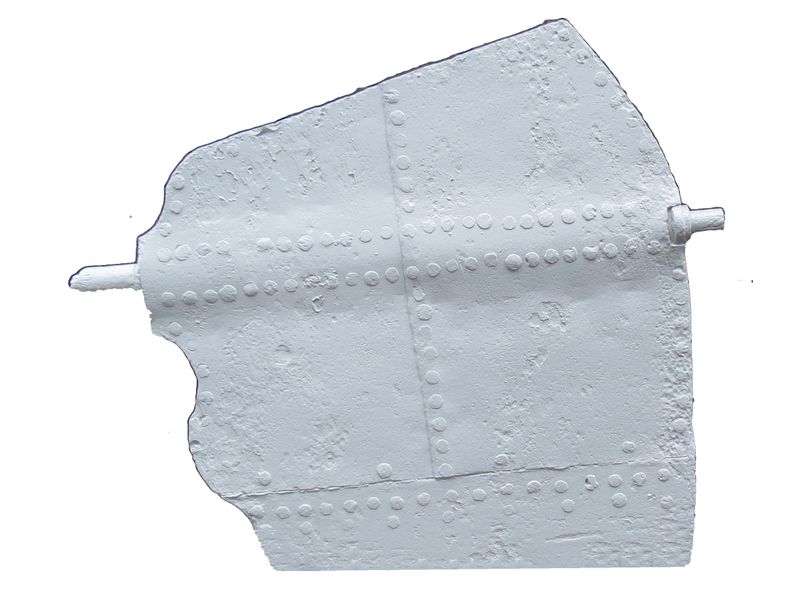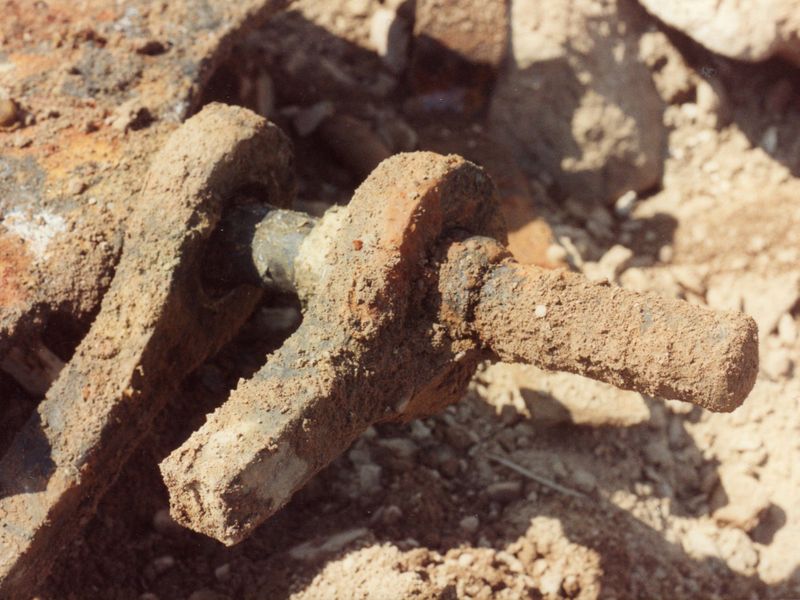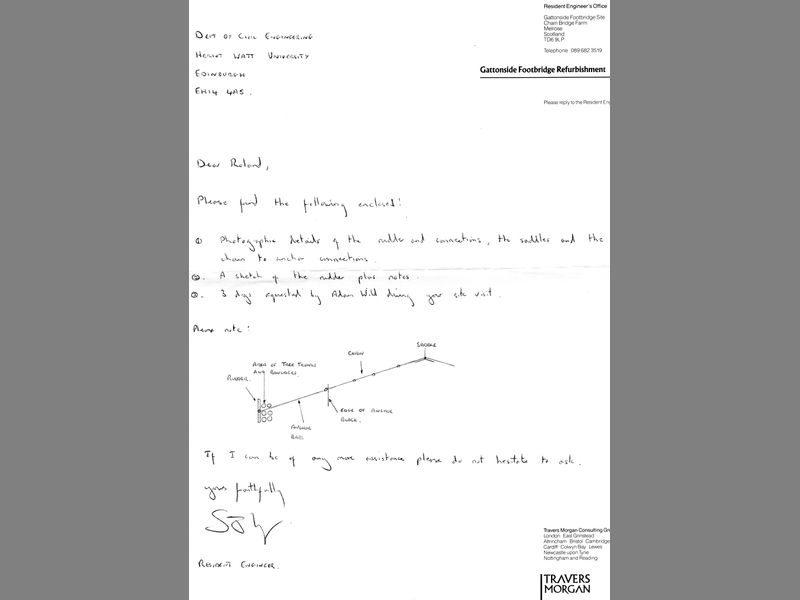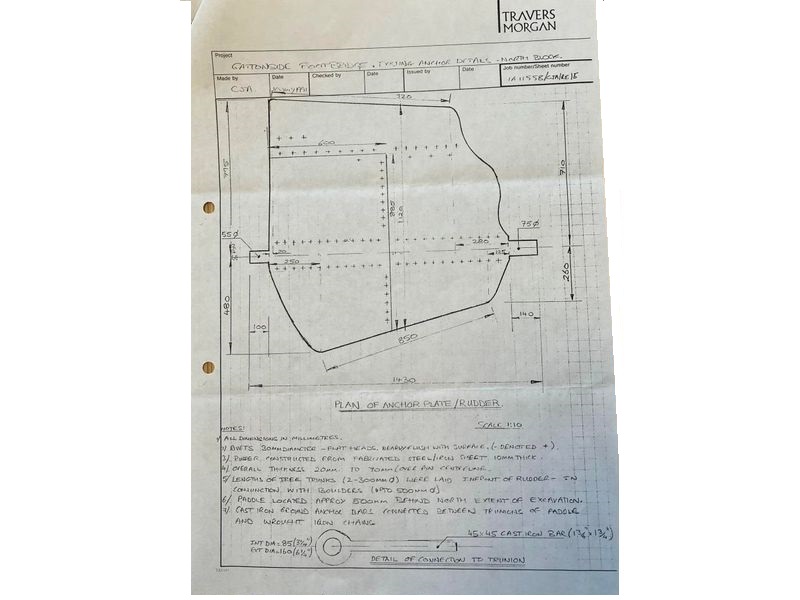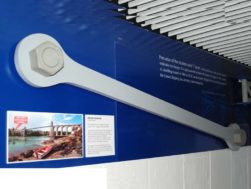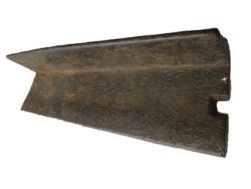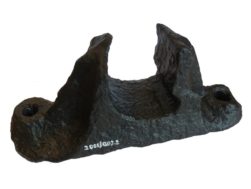Description
Presumed former ship’s rudder repurposed for use as an anchor plate removed during reconstruction from the Gattonside footbridge, Melrose in 1991.
The bridge was completed in 1826 and the rudder was almost certainly used in the original construction. This means that it is most probably a very early example of surviving marine ironwork (if not the earliest known). At the time (1826) malleable iron could not be rolled in widths much greater than 2 ft (610 mm) and it can be seen that the rudder has been made from lengths approximately 2 ft wide and riveted. It was later in the 19th century that iron could be rolled to widths greater than this.
The resident engineer for the 1991 reconstruction produced a detailed drawing of the rudder just after it was excavated. This drawing is shown in Image 4: the textual information provided was:
Gattonside Footbridge Existing Anchor Details – North Block (10 July 1991)
Rivets 30 mm – diameter flatheads, nearly flush with surface.
Rudder constructed from fabricated steel/iron sheet 10 mm thick.
Overall thickness 20 mm to 70 mm (over pin centre line).
Lengths of tree trunks: (2-300 mm ⌀) were laid in front of rudder – in conjunction with boulders (up to 500 mm ⌀).
Paddle located approx 500 mm behind north extent of excavation.
Cast iron ground anchor base connected between trunnion of paddle and wrought iron chains.
A description of the Gattonside Footbridge can be found at https://ice-museum-scotland.hw.ac.uk/product/1991-010/.

